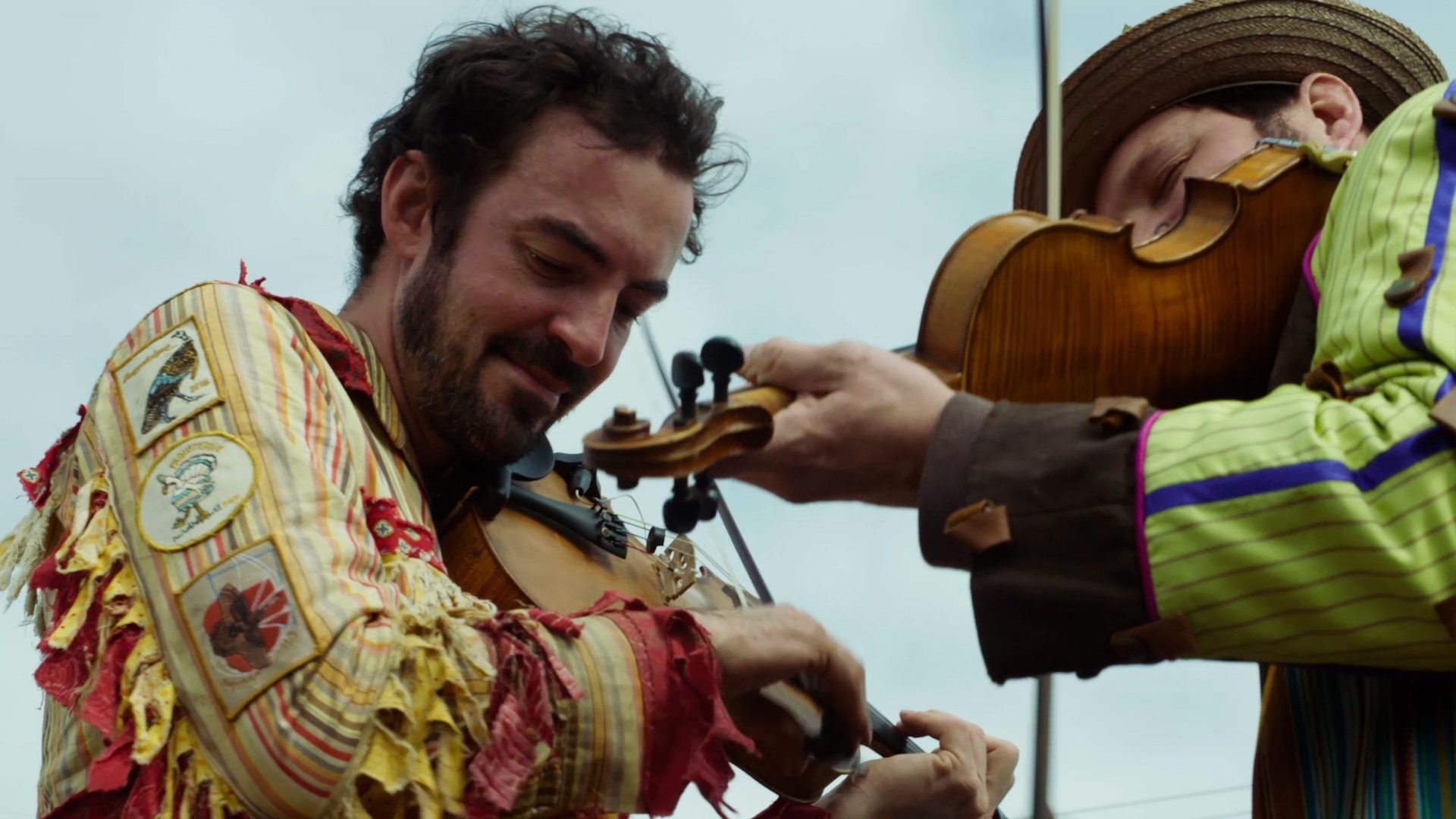QOTSA, Beach House, Weedie, and "Exile" Play Night Shows During Jazz Fest

Photographer Erika Goldring and writer Raphael Helfand covered New Orleans at night during Jazz Fest.
The jam wave that followed Phish’s first appearance at Jazz Fest changed New Orleans’ nightlife during the festival, for years turning it into a place where the members of Lettuce are royalty, Grateful Dead-like jams take place nightly, and friendships made on the Jam Cruise find a stage. Funky jazz rock, rocky jazz funk, and jazzy funk rock have been the dominant sound for a decade, but this year featured some shows that acknowledged the broader spectrum of music. On Friday, April 27, the festival closed with sets by Sting and Sturgill Simpson. Two hours later, Queens of the Stone Age took the stage at the Saenger Theatre, where they brought out a “special, badass motherfucker, Mr. Bobby Rush,” who joined them for crushingly heavy version of “Burn da Witch” and a lighter version of the slow jam “Make it Wit Chu.”
Djembe master Weedie Braimah was a busy man this Jazz Fest. He played in the WWOZ Jazz Tent twice on opening day, with Alexey Marti and with Christian Scott aTunde Adjuah, a frequent collaborator. He joined Trumpet Mafia in the Jazz Tent the next day, and helped Trombone Shorty & Orleans Avenue close out the Acura Stage on Sunday. He was also billed on Frenchmen four times during the festival (not including spontaneous sit-ins) and played a House of Blues set with Butcher Brown. But his biggest show of the weekend was Saturday night at The Music Box, where his percussion ensemble The Hands of Time put on a highly rehearsed, beautifully executed display of rhythmic dexterity.
Joining Weedie and Co. on Saturday were legendary conga player Bill Summers and Ghost Note—the Snarky Puppy offshoot formed by drummers Robert “Sput” Searight and Nate Werth—and bass phenom MonoNeon. Summers and Ghost Note were as busy as Braimah these past 10 days, but they all meshed Saturday for an electrifying set.
The show opened with a speech from Amadou Kouyate, who entered playing the kora, a traditional West African 21-string lute-bridge-harp. He said he would be our spiritual guide on a journey back to Mother Africa and then cued The Hands of Time with the cry, “Before there was sound, there was rhythm!,” at which point The Music Box came to life.
Throughout the set, Braimah occupied a central position in the Music Box’s de facto shanty town square, but Kouyate did most of the talking and balafonist Adama Bilorou Dembele took all the flashiest solos. When Ghost Note entered for the second half of the set, Braimah gave Werth, Searight, and MonoNeon the reigns, and did the same for Summers, who took the lead on a call-and-response-heavy bata suite. At moments, Braimah wowed the crowd with his djembe wizardry, but these moments were few and far between. Mostly, he played a directorial role, sharing the spotlight with his peers. He could generally be seen giving rhythmic instructions to his ensemble, all of which were followed to a T.
Braimah heaped effusive praise on his fellow musicians as he introduced them one by one near the end of the set, finishing with “And I’m Weedie Braimah, thank you.” But Searight refused to let him off that easy. He took the mic and reminded the crowd that Braimah was the one who “brought all these beautiful people together, only because we know he’s one of the baddest motherfuckers in the world.” (Raphael Helfand)
Star-studded tributes have become an important part of Jazz Fest night life, and this year’s “Exile on Bourbon Street” led by Ryan Adams filled that bill. The show wasn’t a parade of stars and relied on a band that included musical director Don Was, John Medeski, Cyril Neville, and Mark Mullins. That show at the Saenger covered The Rolling Stones’ Exile on Main Street in its near-entirety (omitting “Sweet Black Angel”), with Adams taking some liberties with the arrangements. According to Spin’s Winston Cook-Wilson, “Sweet Virginia” took on more of an alt-rock feel, and songs that lived without jams all these years suddenly some when played by Adams.
Beach House put on a breathtaking show at The Civic on the Wednesday, May 1. The band, currently the preeminent voice in dream pop, took the stage after a strong opening performance from Sound of Ceres. Beach House has traditionally played as a duo, using synths, keyboards, and a drum machine to provide backup for Alex Scally’s mournful ostinato guitar licks and Victoria Legrand’s unshakably haunting voice. But in 2016, they added drummer James Barone to their live show. Barone is heavily featured on Beach House’s new album, 7, which was available on vinyl at the show and will be released May 11. The resulting tracks, four of which are already available on iTunes, are noticeably louder and more varied in their arrangements than any of the band’s previous work.
On Wednesday, Beach House used The Civic’s powerful sound system and massive stage to help the songs, new and old, realize their full potential. They opened with new track “Black Car” but immediately brought it back to Bloom (2012) with “Wild,” an instant crowd-pleaser. The rest of their setlist covered their entire catalogue, reaching all the way back to their self-titled debut (2006) with “Master of None” and playing smash hits “PPP” and “Space Song” from the massively successful Depression Cherry (2015). They closed their regular set with Bloom’s “Myth,” but played another 7 track, “Dive,” for their encore.
The Civic was only the second stop on Beach House’s 7 tour, but the new songs sounded crystalline and Legrand’s voice floated above the mix with unparalleled ethereality. With dream pop well into its fourth decade, there isn’t too much innovation occurring in the genre. Legrand and Scally aren’t reinventing the wheel, but at least they’re spinning it with all the angst and melancholy it deserves, and they sound better doing it than just about anyone else. (Raphael Helfand)







